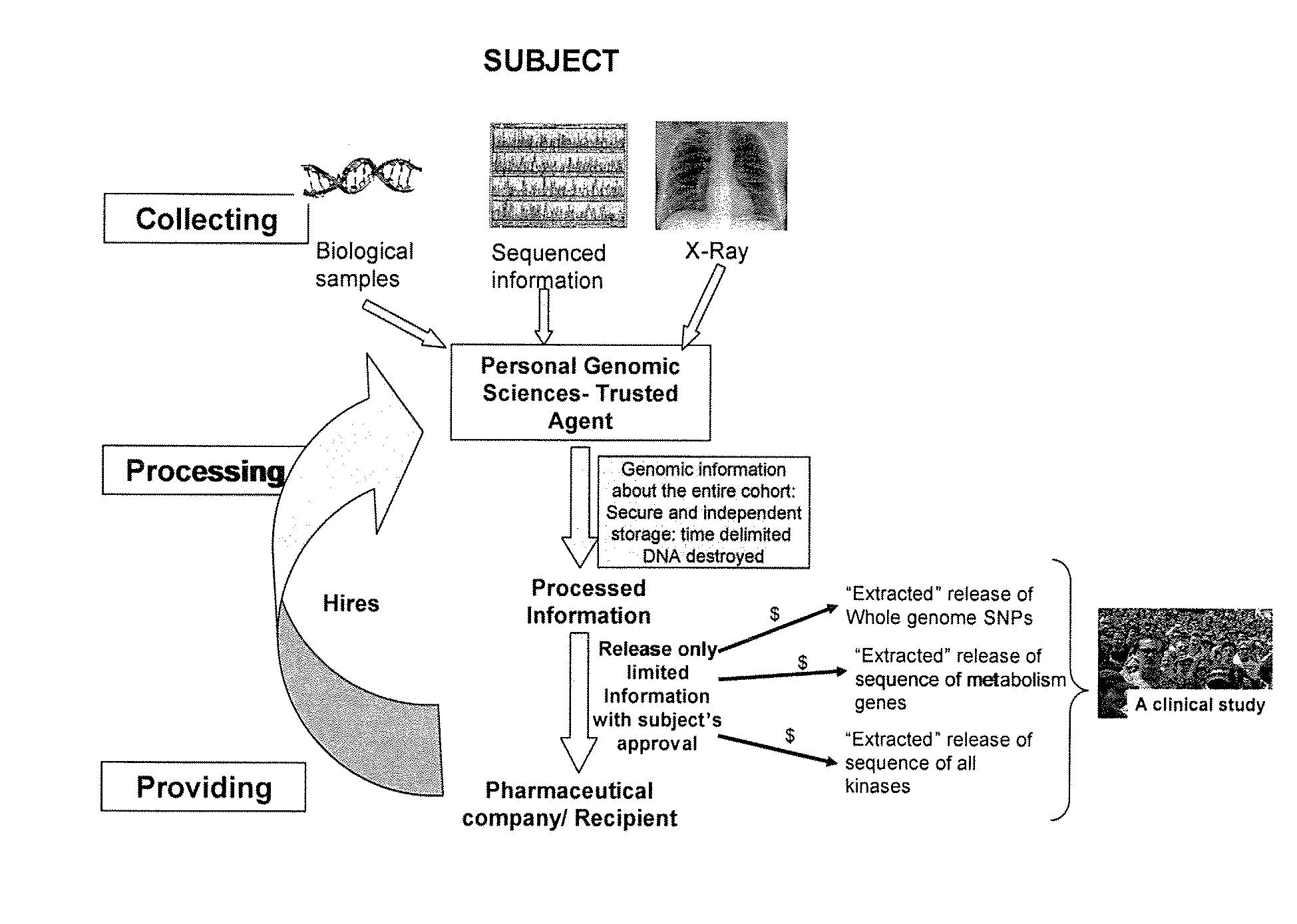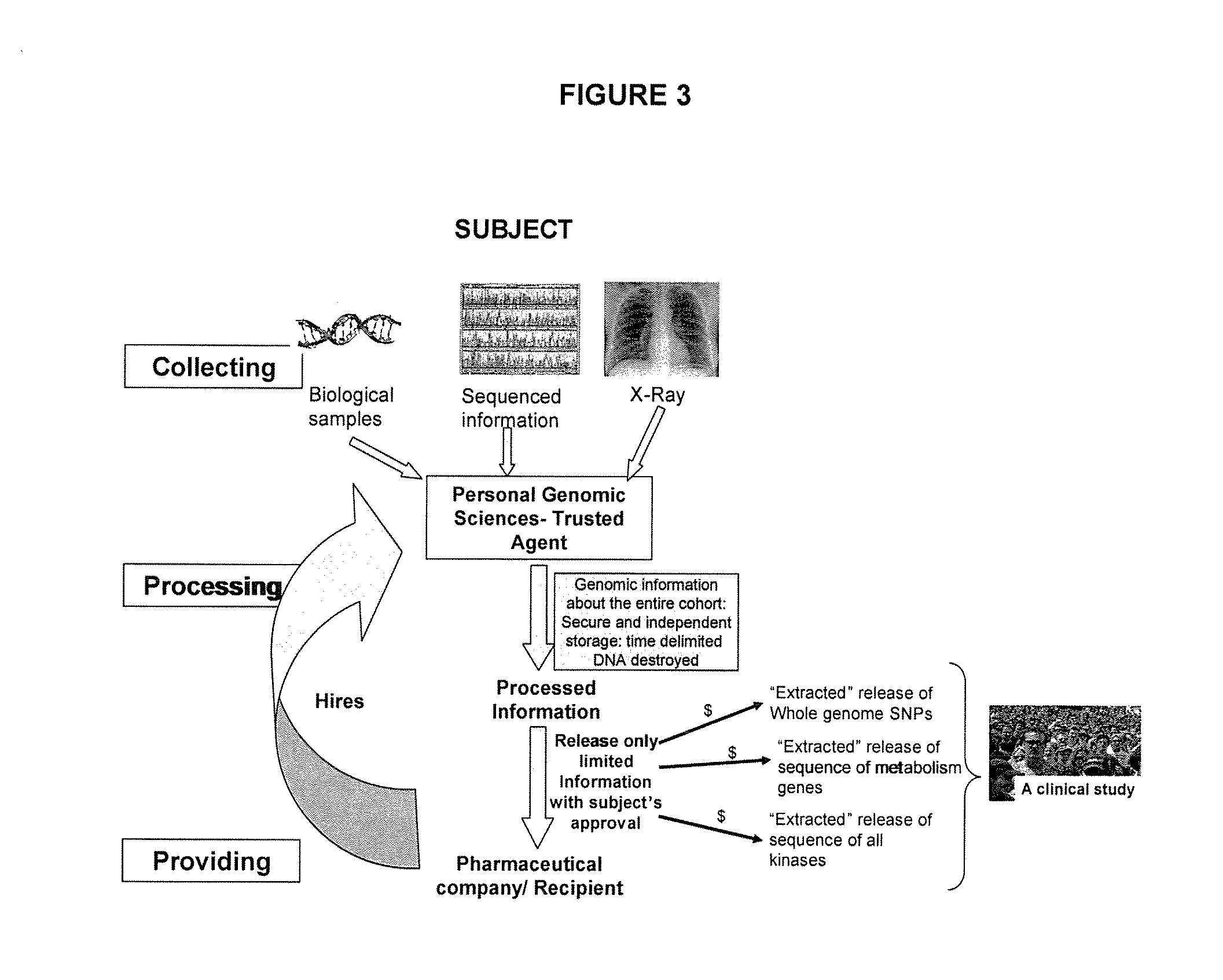Method of processing genomic information
a technology of genomic information and information processing, applied in the field of genomic information processing, can solve the problems of inconvenient patient access, ineffective medical history retrieval for doctors, and fragmented car
- Summary
- Abstract
- Description
- Claims
- Application Information
AI Technical Summary
Benefits of technology
Problems solved by technology
Method used
Image
Examples
Embodiment Construction
[0034]The present invention provides at least one method, apparatus and / or system for processing and / or providing information obtained from at least one subject. In particular, the method, apparatus and / or system comprises a trusted agent wherein the agent collects information from at least one subject and processes the information. The trusted agent may further provide the processed information to at least one recipient. The recipient may be engaged in health care and / or research and development agent. The trusted agent further provides the subject with secure access to the information such that the subject can limit the providing of the processed information.
[0035]For the purposes of the present invention the term “trusted agent” refers to any person capable of collecting and / or processing a biological sample for genomic, proteomic, biochemical, and / or metabolic information from the subject. The trusted agent may belong to an agency that is involved in the collecting and / or proces...
PUM
 Login to View More
Login to View More Abstract
Description
Claims
Application Information
 Login to View More
Login to View More - R&D
- Intellectual Property
- Life Sciences
- Materials
- Tech Scout
- Unparalleled Data Quality
- Higher Quality Content
- 60% Fewer Hallucinations
Browse by: Latest US Patents, China's latest patents, Technical Efficacy Thesaurus, Application Domain, Technology Topic, Popular Technical Reports.
© 2025 PatSnap. All rights reserved.Legal|Privacy policy|Modern Slavery Act Transparency Statement|Sitemap|About US| Contact US: help@patsnap.com



